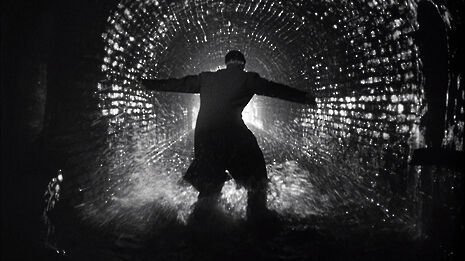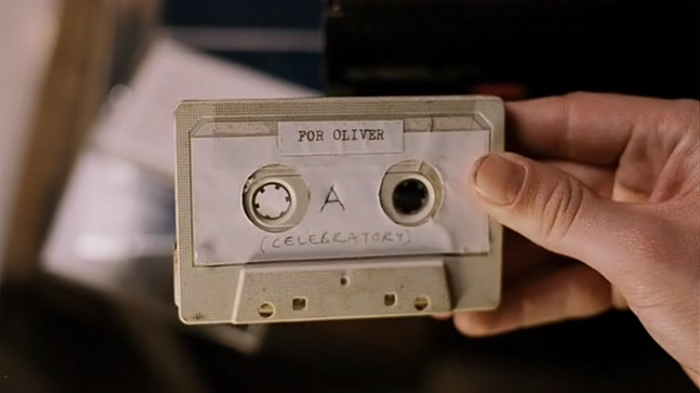Movie Tunes: Fanfare for The Third Man
Uninspired by much of modern film music, Seth Jordan hopes Carol Reed’s masterpiece can teach directors a lesson or two

The bland formula for a movie soundtrack can be heard in most modern blockbusters. Pumping bass for thrilling scenes, high strings in emotional moments, and brass fanfares at the heroic climax are fairly standard tropes that hit all the right emotional beats without attempting anything more than safe, tried-and-tested banality.
The phenomenon of ‘temp music’ is to be blamed for much of this. Directors often watch cuts of their film during editing with another film’s music overlaid, then ask their own composer to copy it. The urge to stay safe with movie soundtracks has plagued Hollywood for generations and the huge potential for excitement opened up by ignoring convention is gloriously exhibited in the masterful 1949 noir classic The Third Man.
Set in post-World War Two Vienna, the film could easily have opted for a schmaltzy orchestral score in keeping with the standard hits of the period. Instead, director Carol Reed insisted on Anton Karas’s zither (a 20-stringed eastern European guitar-like instrument) to soundtrack the action. The film tells the story of Holly Martins, an American pulp-western author, arriving on the continent to meet his old school friend, Harry Lime.
Instead of being greeted with open arms, Martins is plunged into a world of mystery and deception, murder and betrayal. Lime is apparently dead and, far from the romanticism of Holly’s westerns, was part of the “worst bunch of racketeers” in the city. In search of answers, Martins meets Lime’s ex-lover Anna and begins investigating a world more bleak, uncertain and confusing than he has ever known.
Nothing is quite as it seems in the world of The Third Man. Divided into four international zones after the war, Holly struggles to comprehend the melting pot of languages and motivations, the foreignness and confusion of a world on the brink of Cold War. The world and the characters within it are distorted by off-angle shots and a face-stretching the use of the wide-angle lens. Mountains of rubble stand next to traditional Viennese buildings and huge light sources around every corner turn even the most innocent of balloon sellers into a monstrous, 50-foot shadow, creeping along the walls like a nightmarish Golem.
Behind all this uncertainty is Karas’s lilting zither, shifting and morphing to fit the different moods. Beginning with Holly “happy as a lark and without a scent”, the jaunty music reflects his innocence and the action almost playing out like an adventure story. Quickly it takes on different forms, sinister when accompanying the workings of the racketeering industry, farcical alongside Holly’s alcoholic blunders, unsettling in conversations with Harry Lime’s shifty acquaintances Baron Kurtz and Dr Winkel, and wistfully nostalgic in scenes with Anna.
In a world of mistaken identity and misapprehension, the score grounds us in Vienna and represents the distinctly unromantic outlook of the film. By the end, although the mystery of Harry Lime has been resolved, Holly is no closer to understanding Anna’s faith to a racketeer and Europe remains alien and impenetrable. The zither carries on jangling just as it did at the beginning and the scars of Lime and the war remain unhealed.
The production of the film was equally unromantic. Both director Carol Reed and producer David O. Selznick were addicted to a form of speed, the former working 20-hour days throughout the shoot. Reed, as well as screenplay-writer Graham Greene, had served in World War Two (as propagandist and spy respectively), and a grim awareness of a devastated and uncertain world runs underneath much of the film.
Despite the struggle, The Third Man is a record of the victory of independent creativity over big studio convention. Reed and Selznick were at loggerheads over many of the film’s most crucial moments. Selznick wanted a shoot on Hollywood sets and suggested the film be called ‘Night Time in Vienna’. He even suggested that Noel Coward should play the charismatic Harry Lime, a part Orson Welles was born to play. Although Reed won out creatively, Selznick appeased himself by relentlessly commercialising Karas’s score following the film’s success. Launching a campaign with the tagline “He’ll have you in a dither with his zither!”, the score became a transatlantic hit and the ‘Harry Lime Theme’ sold hundreds of thousands of records.
Yet Reed’s insistence on Karas’s enigmatic score achieved something greater than just a box office smash. It proved that unorthodox choices and brave filmmaking can go hand-in-hand with hugely entertaining and exciting storytelling. The Third Man is a testament to cinematic risk-taking, and demonstrates the profound importance of music in shaping the experience of a film. So, while the zither may not be the solution to all the woes of modern film music, the success of its unorthodoxy provides a lesson that more directors should learn
 News / Eight Cambridge researchers awarded €17m in ERC research grants27 December 2025
News / Eight Cambridge researchers awarded €17m in ERC research grants27 December 2025 News / Clare Hall spent over £500k opposing busway 24 December 2025
News / Clare Hall spent over £500k opposing busway 24 December 2025 Comment / League tables do more harm than good26 December 2025
Comment / League tables do more harm than good26 December 2025 Comment / The ‘class’ of Cambridge24 December 2025
Comment / The ‘class’ of Cambridge24 December 2025 News / Caius mourns its tree-mendous loss23 December 2025
News / Caius mourns its tree-mendous loss23 December 2025









